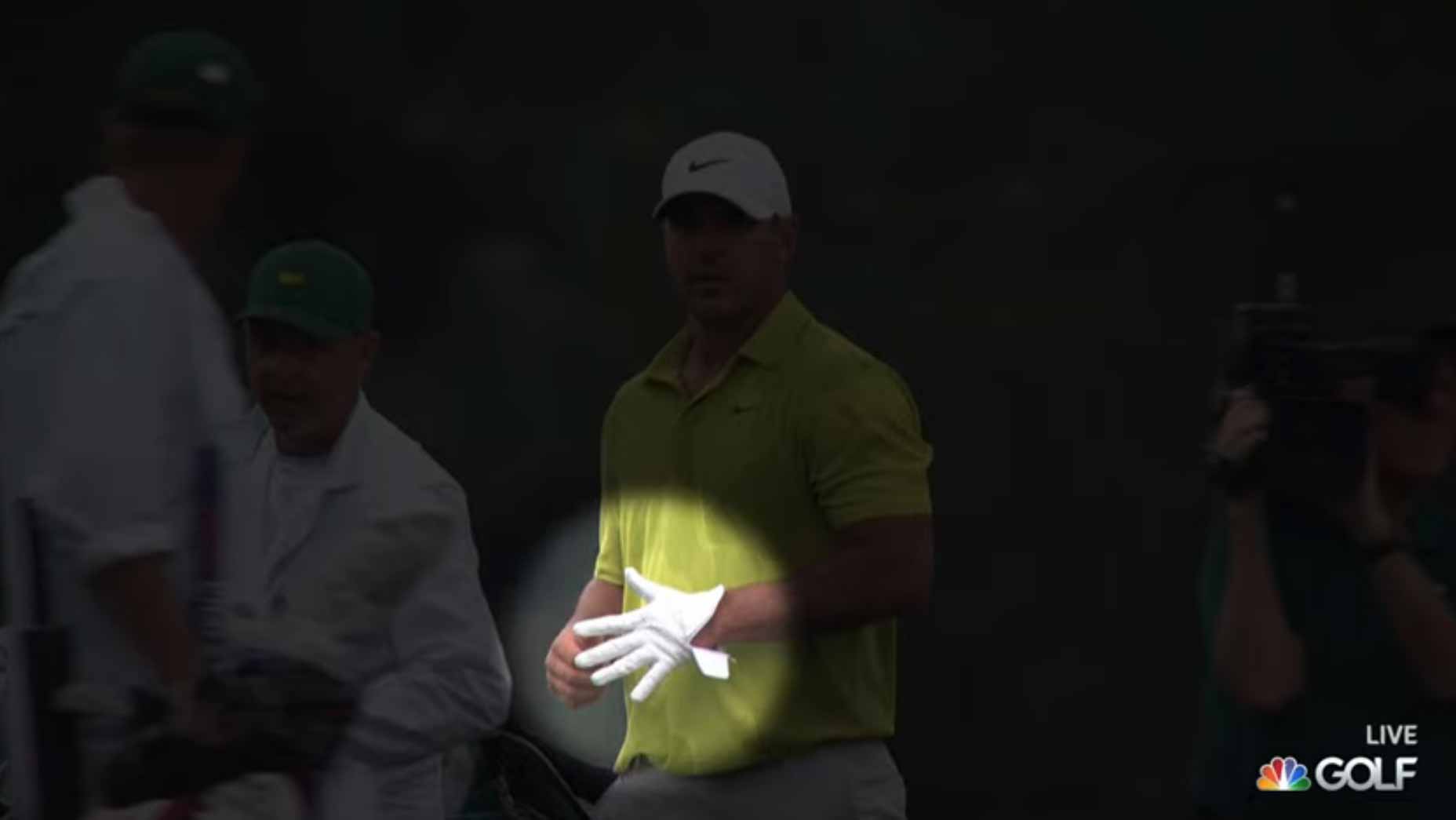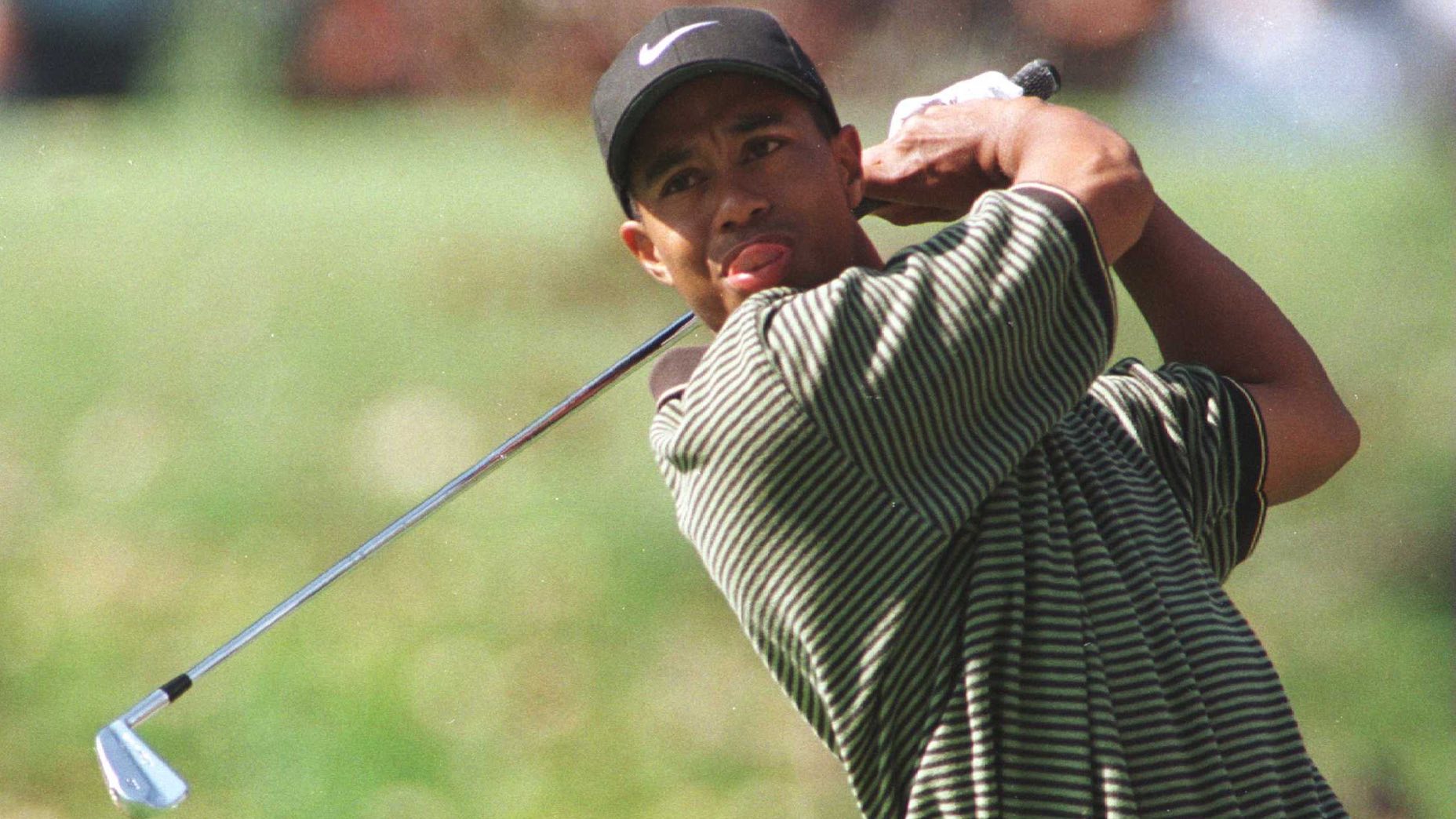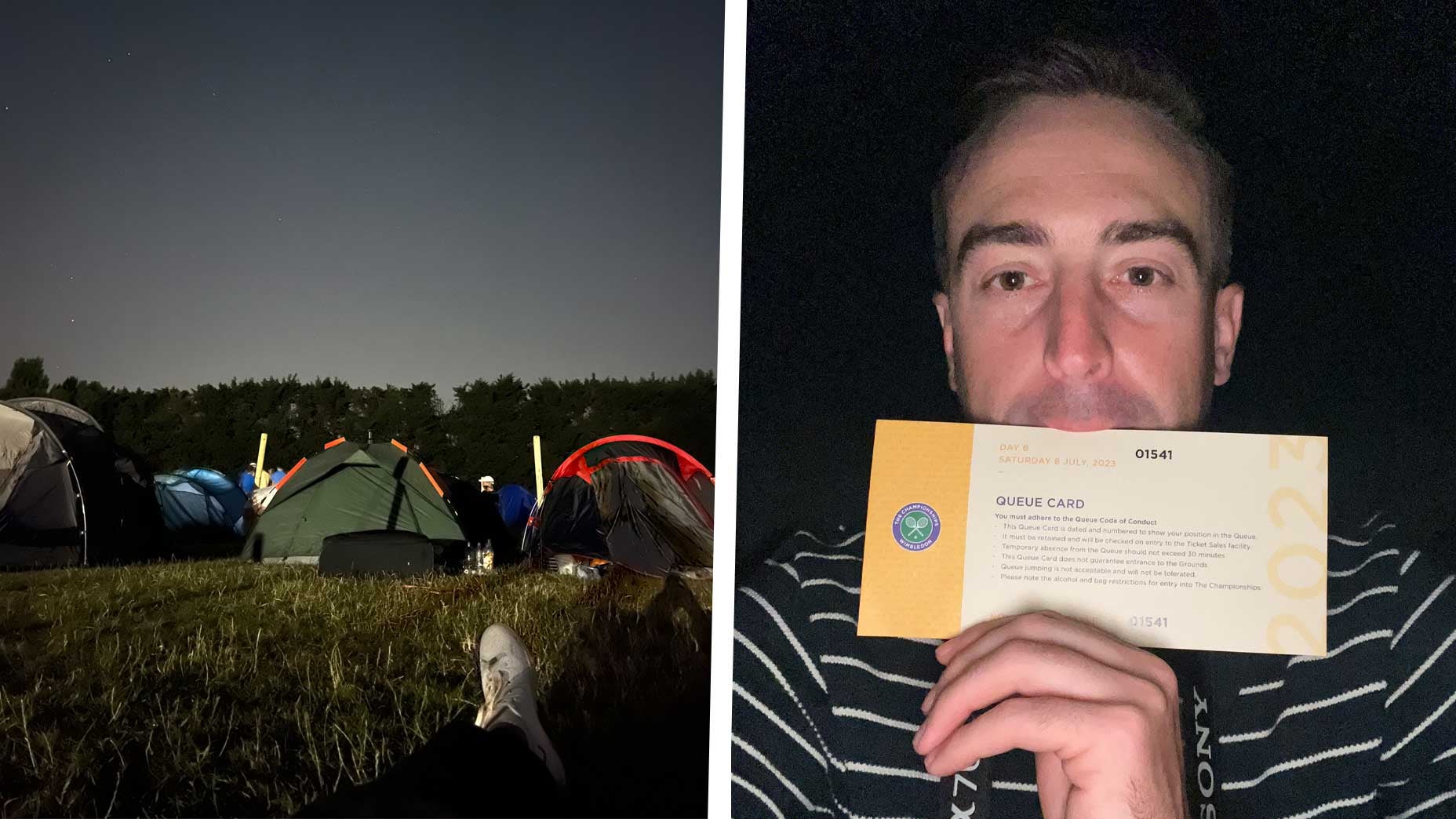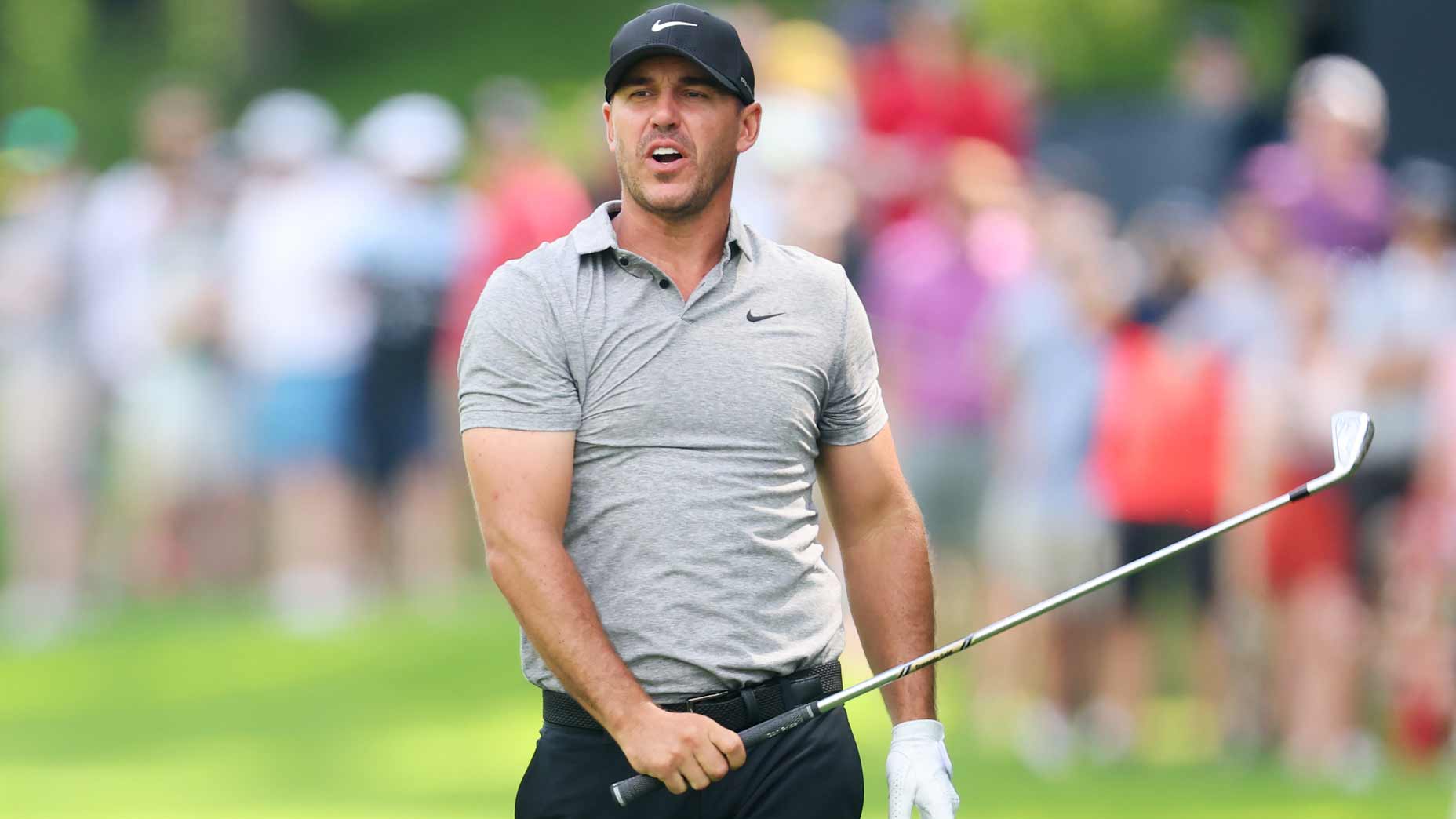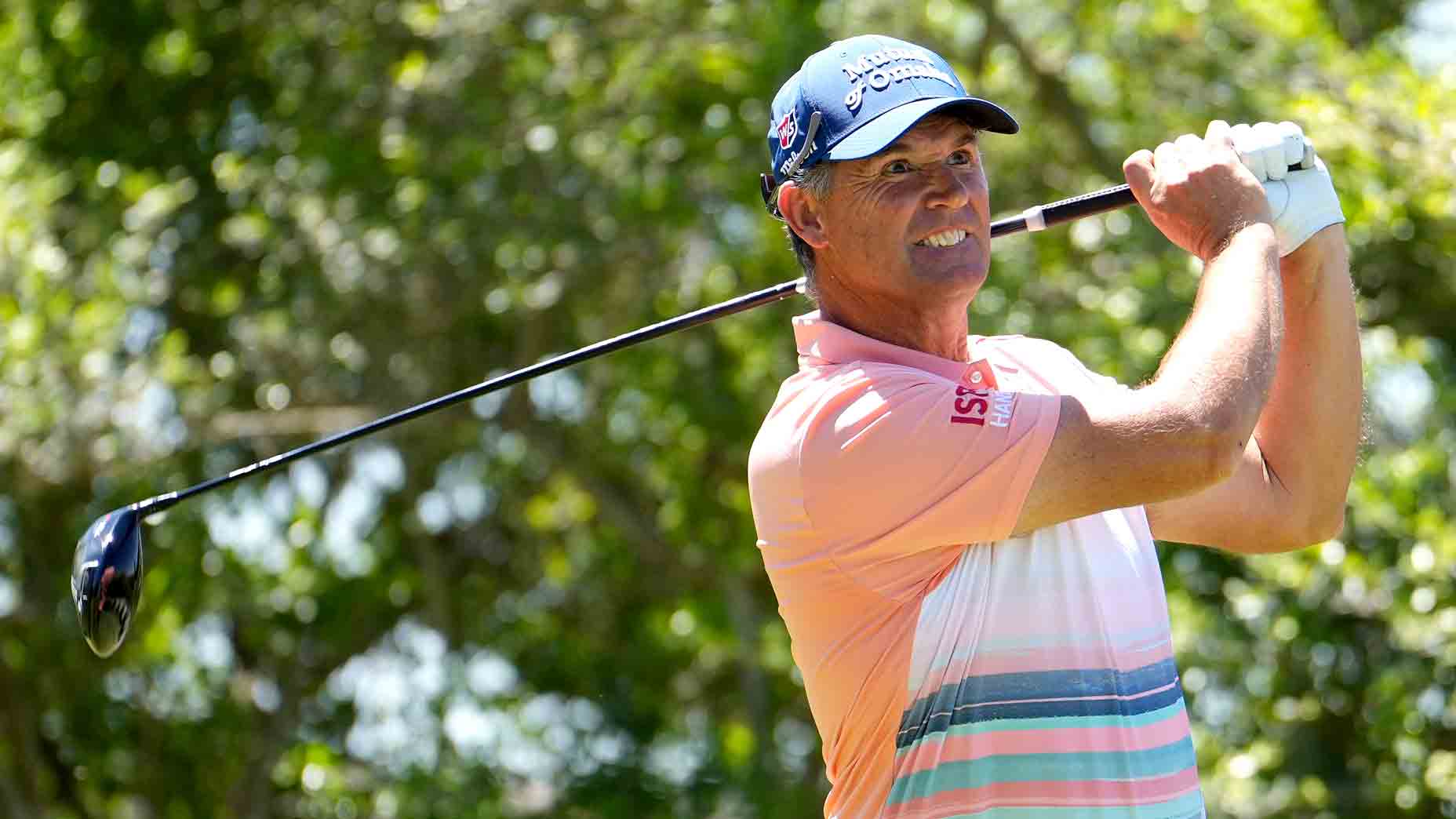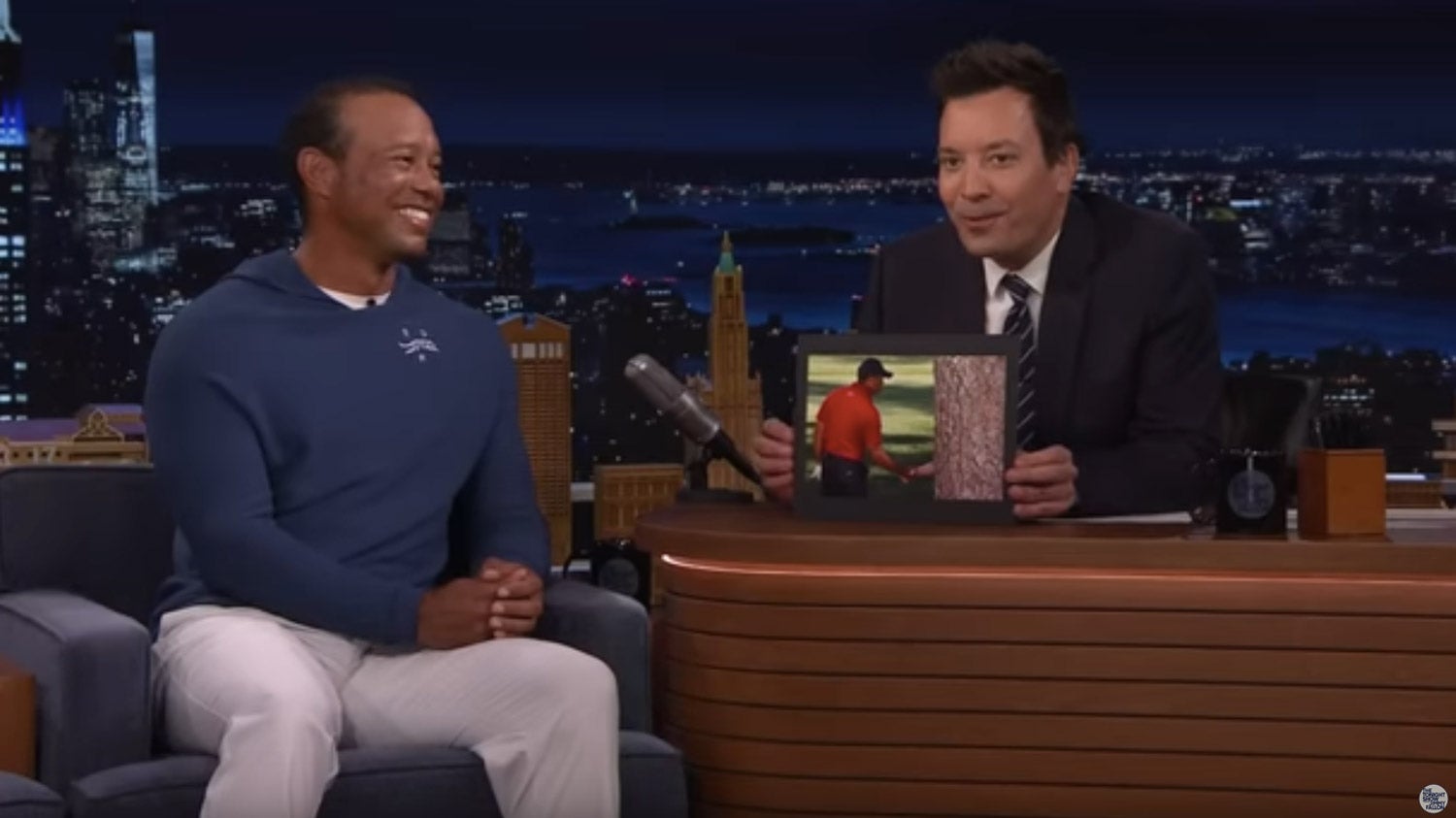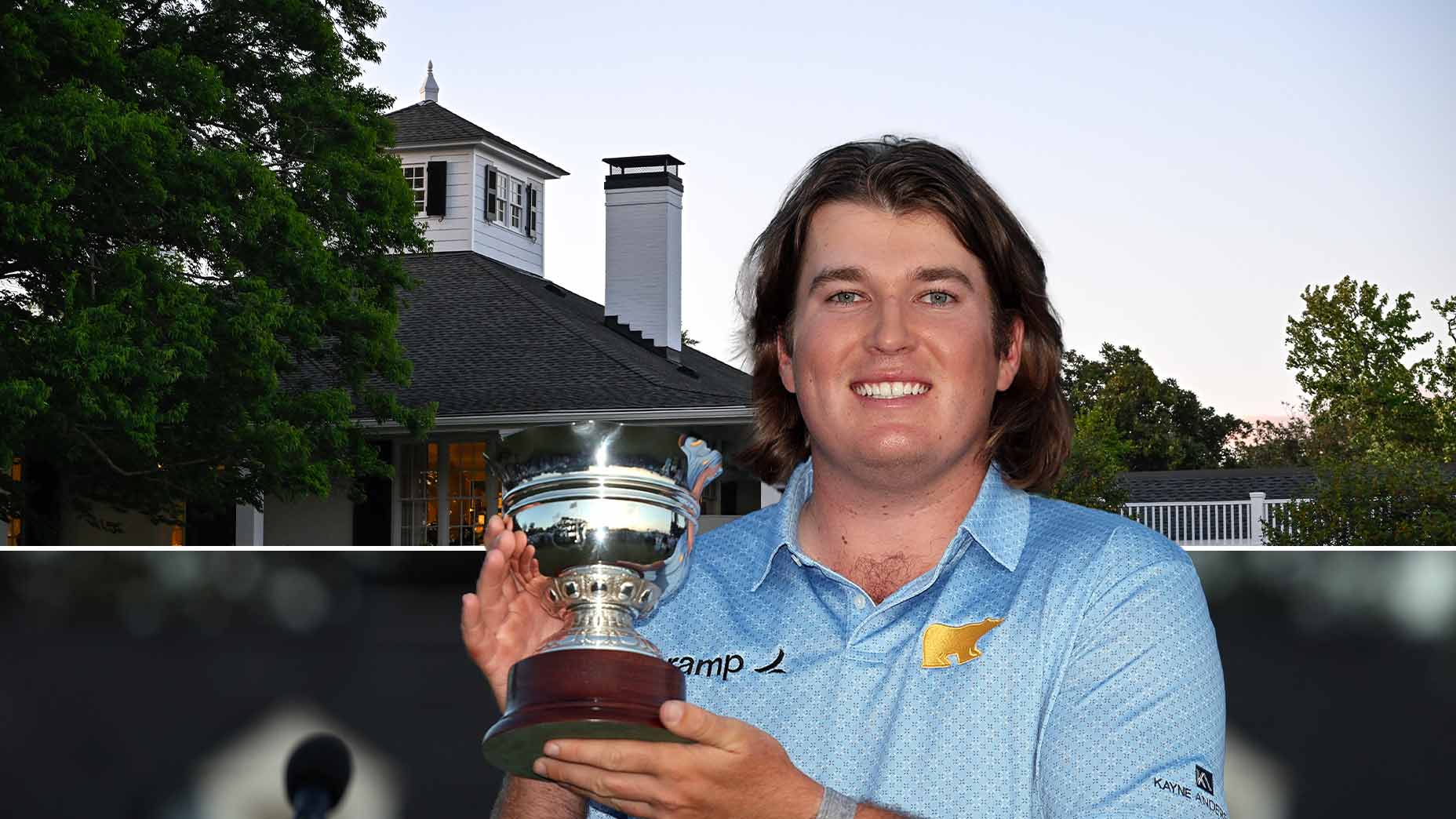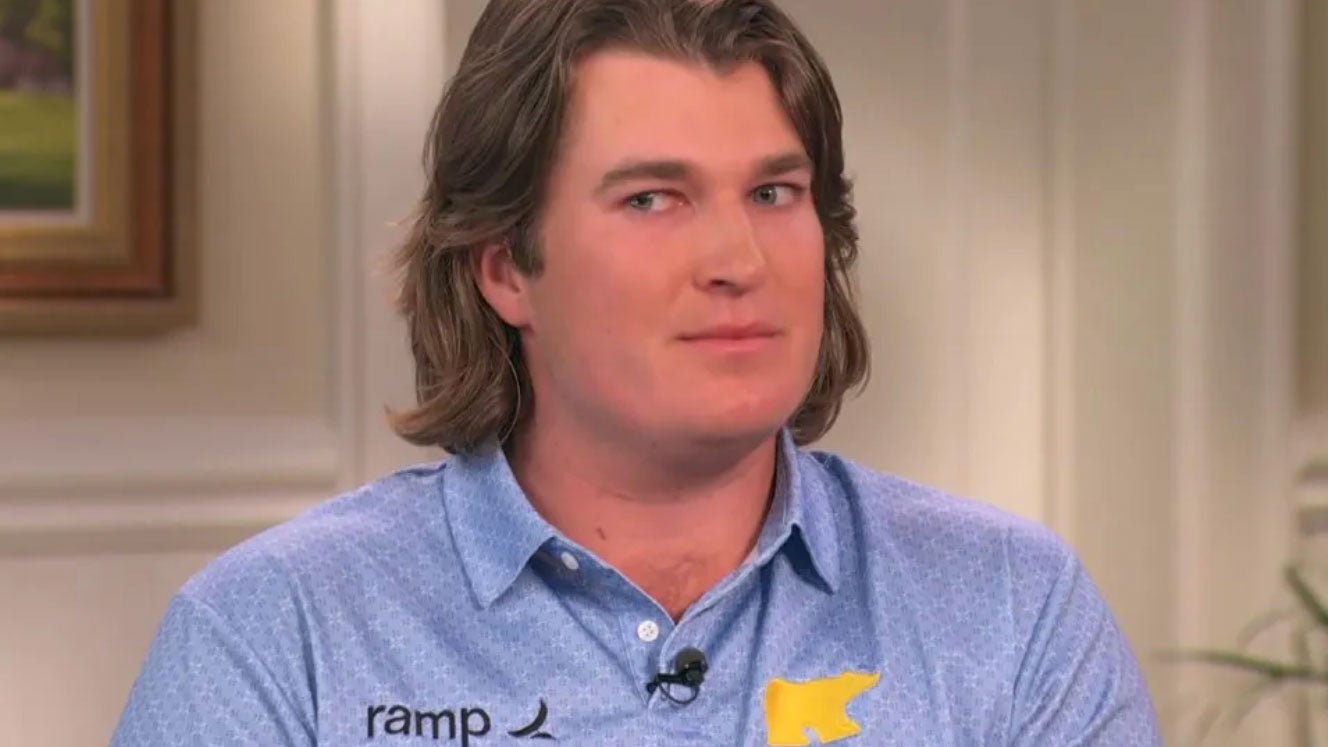Unlikely allies Brooks Koepka and Rory McIlroy had radically different Masters

Rory McIlroy and Brooks Koepka played together on Tuesday at Augusta National.
Getty Images
AUGUSTA, Ga. — On the Sunday night before Masters Week, Brooks Koepka checked his phone to find a text from an old rival.
Rory McIlroy had reached out to offer his congratulations.
Koepka had just finished off his victory at LIV’s Orlando event, edging Sebastian Munoz by a shot. It was Koepka’s second victory in his last four LIV starts. Post-round, he attributed his win to his renewed health. “I feel really good,” he said.
He said something else interesting, too. Asked how important he thought the Masters was for LIV’s slate of competitors, Koepka’s mind went to his former PGA Tour competition instead.
“Yeah, it’ll be great just to see all the good players back, back in one field again, right?” he said. “I’m looking forward to it, just to see everybody and compete against them, because at the end of the day, I’ll be honest, I do miss playing against Rory, I do miss playing against Scottie [Scheffler], and I’m sure they miss playing against us, as well. That’s a fact; you always want to play against the best. That’s going to make Augusta even more special.”
He sounded thoughtful. Nostalgic, even.
After wrapping up in Orlando he responded to McIlroy’s text with an offer: practice round on Tuesday?
ON TUESDAY MORNING, McIlroy came to the media center for a typically wide-ranging press conference. Nobody entered the week under more pressure to perform; McIlroy is one Masters from the career Grand Slam, the same position he’s been in since the 2015 playing. He’s contended since then and finished second last year but hasn’t found his best when the lights have been the brightest.
“I would say the majority have been mental or emotional struggles rather than physical,” he said. It was a vulnerable admission. “I’ve always felt like I have the physical ability to win this tournament. But it’s being in the right head space to let those physical abilities shine through.”
In the past, McIlroy has tried downplaying majors in an attempt to treat them like any other week. But he’d made no secret of just how badly he wanted this one. He’d been a regular at Augusta National in the preceding weeks, logging 81 holes over multiple scouting trips. He acknowledged he’s aware just how badly people want it all for him: the Masters title, the fifth major, the drought’s end, the Grand Slam.
“But yeah, no one wants me to win this tournament more than me, right?”
He addressed the PGA Tour-vs.-LIV tension headlining the week. He didn’t deny its existence — it’s all anyone was talking about — but in this case, he said, the Masters was bigger than pro golf’s war. He struck a conciliatory tone, going out of his way to explain that he doesn’t see all LIV guys the same. He specifically name-checked two of his South Florida neighbors in the process.
“It’s a very nuanced situation and there’s different dynamics,” McIlroy said. “You know, it’s okay to get on with Brooks and DJ and maybe not get on with some other guys that went to LIV, right. It’s interpersonal relationships, that’s just how it goes.”
ON TUESDAY AFTERNOON, McIlroy and Koepka headed to the first tee. They’d been paired together countless times as top-ranked PGA Tour stars, but these two making time to play a practice round was a far rarer sight.
The contrasts between the two are many and obvious. They’re figureheads of rival tours; McIlroy has become the vocal leader of the PGA Tour while Koepka is LIV’s greatest big-game hunter. They’re contrasts in stature; McIlroy is lean while Koepka is thick. They’re different at the microphone; McIlroy is thoughtful and verbose while Koepka is brisk and brusque. The curly Ulsterman and the surly Floridian make an unlikely couple.
But their walk ’round Augusta National’s front nine was a reminder of the ties that bind them. McIlroy and Koepka are the only two men younger than Tiger Woods to have won four major championships. They’re bonded by mutual respect, by a love of competition, by a hunger for more, by greatness and the loneliness that comes with it.
Each wore a Nike polo in a shade of orange as they studied the course with their third, amateur Gordon Sargent, a sophomore at Vanderbilt University. McIlroy and Koepka chatted freely, bantering around the greens on hole locations and short-game shots who knows what else. It looked a comfortable pairing, caddies included; Koepka’s looper Ricky Elliott hails from Northern Ireland, as do McIlroy and his caddie Harry Diamond.
Murmurs ran through the crowd at the sight the two together. What did it mean, seeing a top PGA Tour player pair with a top LIV guy? Was this an olive branch? A sign of alliance? McIlroy said he’s seen Koepka in Florida “a lot.” There have been rumors that Koepka is less than rah-rah about his decision to join LIV. Was this just a practice-round pairing — or something more?
After the round, Koepka took a few questions. He was asked if his pairing with McIlroy felt like a “good step forward” for professional golf.
“I guess you could look at it that way,” he said. “It’s more just two friends just wanting to play together.”
He added that he’d wanted to compare his game to McIlroy’s. He added how nice it was to see friends from the PGA Tour he’d missed. The reception from fans and players had been good, overall.
“Everything’s been good, man. We’re still the same people.”
ON THURSDAY AFTERNOON, Koepka made his move. Birdie at 2. Another at 3. He was off and running. An eight-birdie, seven-under 65 left him tied for the lead. He came into the media center post-round and faced 27 questions, an unusually long inquiry for a Thursday.
Koepka projected confidence. “I don’t think I’ve rediscovered anything. I just think I’m healthy, so I can move the way I want to,” he said. In other words, he wasn’t surprised to be contending.
He reflected on his Netflix appearance, which showed him at a low moment at last year’s Masters, where he played the first two rounds with McIlroy, who wound up finishing second. Several scenes made it clear his health and confidence were each depleted; he was admittedly insecure about his ability to keep up. To his credit, Koepka said he didn’t mind the portrayal.
“I’m pretty vulnerable, too, away from the golf course,” he said. “I’ve always said what you see on the golf course isn’t what you get behind closed doors. Hopefully people were able to take that from it.”
He was also questioned on a rules controversy after an incident at No. 15 where he and his caddie appeared to signal to playing partner Gary Woodland’s caddie Brennan Little what club they’d selected for Koepka’s approach. Giving advice is a two-shot penalty, as is receiving.
“Yeah, we looked at it when we got back in,” Koepka said. He denied any wrongdoing.
McIlroy couldn’t seem to get in rhythm. He birdied 2 but bogeyed 3. Doubled 7, birdied 8 and 10 — but then bogeyed 11. His touch around the greens was a touch off. His approach shots kept missing the mark. He showed flashes of brilliance but handed back too many shots en route to even-par 72.
Still, he found reason for optimism heading to Friday.
“I can shoot something in the mid-60s and get myself back in it,” he said.
ON FRIDAY MORNING, Koepka locked back in. If the controversy had affected him at all it had focused him. He played the four par-5s in five under — highlighted by a statement eagle at No. 8 — and made par on every other hole. His lead grew from one to three to five; Jon Rahm wouldn’t begin to close the gap until later in the day. It was a clinical showing. He returned to the media center for another session. He was thinking big. Like, all-time big.
“Yeah, the whole goal is to win the Grand Slam, right?” he said. “I feel like all the greats have won here and they have all won British Opens as well. Look, I guess it’s one more box for me to tick to truly feel like I’ve done what I should have accomplished in this game.”
Just how much does the Masters mean to Koepka? When he missed the cut last year, he tried to put his fist through the glass of his courtesy car.
“I guess Mercedes makes a pretty good back window,” he said.
It was a throwback to the Koepka of old, the showman, who reveled in his chance to show out as a dominant performer on the course and an entertainer away from it. And his most revealing moment of the session came when asked about his LIV decision — and whether it would have been more challenging had he been at full health.
“Honestly, yeah, probably, if I’m being completely honest. I think it would have been,” he said. “But I’m happy with the decision I made.”
He mentioned seeing PGA Tour guys around town. There are a half-dozen top guys who live within a quarter-mile, he said. He sees them at Grove XXIII. He sees them at Medalist. He sees them out practicing; their line of work leads to plenty of overlap. But facing them in a big-time tournament is different.
“It’s just competitively where you miss playing against them, right,” he said. “Because you want Rory to play his best and Scottie to play his best and Jon to play his best and go toe-to-toe with them. I do miss that, and that’s one thing that I do miss, and that’s what I think makes these majors so cool.”
ON FRIDAY AFTERNOON, McIlroy wasn’t playing his best.
That’s perhaps not strong enough. McIlroy was playing his worst. He kept bombing drives down the fairway only to have the rest of his game let him down. Nos. 2 and 3 are good birdie chances for any player in the field but especially one of McIlroy’s length. He bogeyed both, moving dramatically in the wrong direction. He three-putted No. 6 for another bogey. Clipped a tree at No. 7 and dropped another stroke. Found the water on his approach at No. 11 and made another. Forget chasing down the leaders — McIlroy was on full tilt now, five over par, well outside the cut line and only getting further from it.
There’s been plenty of recent talk about the merits of a cut. Perhaps the strongest effect of the cut is cementing the abject failure of a missed weekend. Sure, there’s something merciful about eliminating the players with no chance to win. But there’s something particularly devastating about being sent home early from golf’s dreamland, Augusta National Golf Club, two days early. Golf’s most exclusive cocktail party goes on without you.
McIlroy clawed one shot back with a birdie at 13. He hit a brilliant, towering long-iron approach into the par-5 15th, too. Now he had a six-footer for eagle to get back to two over, safely inside the projected cut line.
He missed it.
McIlroy missed a short par putt at 16, too, falling fatefully to four over. He stepped to the 18th tee needing birdie for any chance at the weekend. Storm clouds loomed overhead. He pumped his tee shot into the right trees. Ten minutes later he walked off after another bogey and a deflating 77. His weekend was over.
A cluster of reporters waited for McIlroy to emerge from scoring, hoping for a post-mortem. What were we to make of this performance? What was amiss with his putting? With his wedges? Was it physical? Mental? Emotional? And now what? What do you do, after trying and failing at the thing you wanted most?
A glance back at the imposing white leaderboard by 18 was a reminder that Koepka had, through two rounds, bettered McIlroy’s score by 17. He’d be chasing history on the weekend in the form of a fifth major. He’d be chasing the first major for a full-time LIV pro. McIlroy would have no say in the matter.
Harry Diamond slung the green-and-white Taylormade bag over his shoulder and headed to the parking lot. Before McIlroy emerged, the horn blew. The green jacket in charge of media informed the assembled: no more interviews.
McIlroy vanished into the dreary Augusta afternoon, his parting thoughts left unspoken, suddenly and quietly gone. The show would go on without him.

